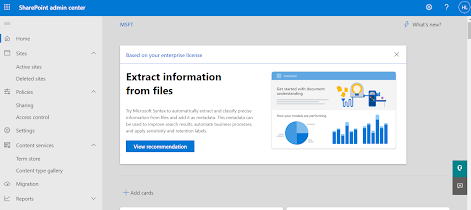Azure Storage Services - Part 2
This is continuing part of Azure Storage. We talked about part 1 article on this and this is second part of it.
Storage Account
Settings
Following three settings that apply to the account itself
- Name
- Deployment model
- Account kind
Name: must be
globally unique within Azure, use only lowercase letters and digits and be
between 3 and 24 characters
Deployment model:
It is the system Azure uses to organize your resources. The model defines the
API that we use to create, configure, and manage those resources. Azure
provides two deployment models.
·
Resource Manager: the current model that uses
the Azure Resource Manager API
·
Classic: a legacy offering that uses the Azure
Service Management API
Microsoft recommends that you use Resource Manager for all
new resources.
Account kind:
Storage account kind is a set of policies that determine which data services
you can include in the account and the pricing of those services. There are
three kinds of storage accounts.
- StorageV2 (general purpose v2
- Storage (general purpose v1)
- Blob storage
Microsoft recommends that you use the General-purpose v2
option for new storage accounts.
Account Creation
Tool
Typically based on if you want a GUI and whether you need
automation.
Available tools
- Azure Portal >> GUI based
- Azure CLI (Command-line interface) >> Supports Automation
- Azure PowerShell >> Supports Automation
- Management client libraries >> Supports Automation
The Azure CLI and Azure PowerShell let you write scripts,
while the management libraries allow you to incorporate the creation into a
client app.


Comments
Post a Comment